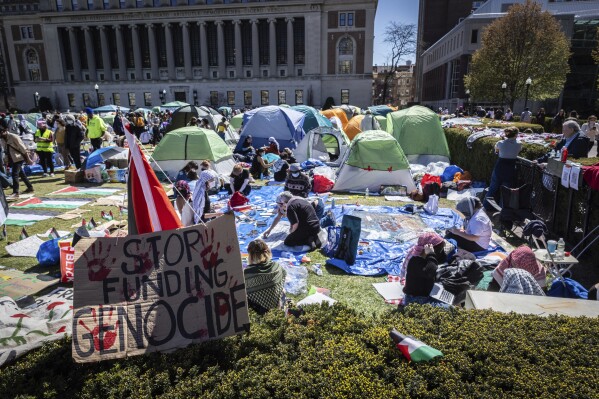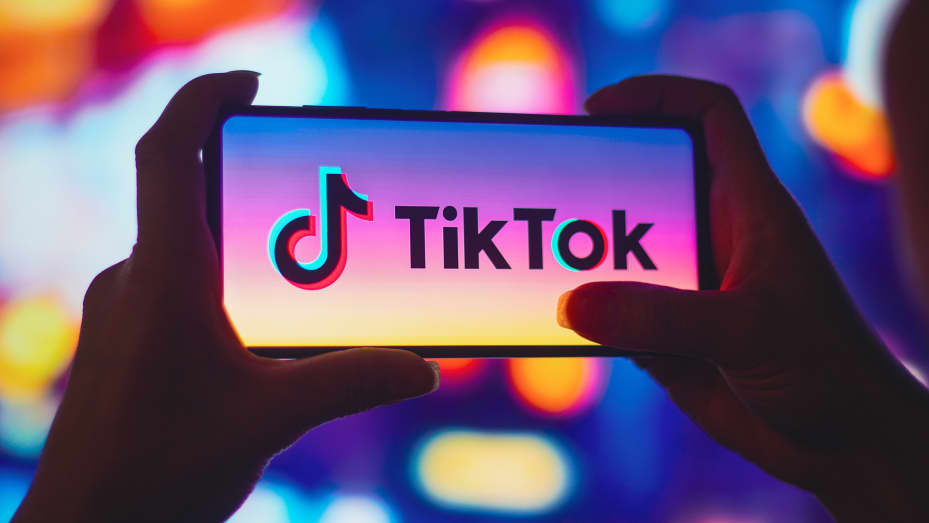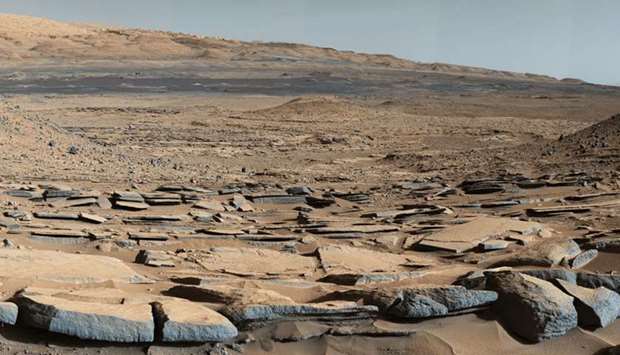뉴스&스피킹(영자신문)
하루 10분이면 영어에 대한 두려움을 극복하고 누구나 유창하게 영어를 구사하실 수 있습니다.
-
 Ramen Is Becoming More Popular Worldwide Ramen is a kind of Japanese noodle dish. It might be the world’s favorite Japanese food.
Ramen Is Becoming More Popular Worldwide Ramen is a kind of Japanese noodle dish. It might be the world’s favorite Japanese food.
Ramen has increased in popularity in the U.S., South Korea and other countries. The dish is also growing in popularity with foreign visitors to Japan.
NielsenIQ is a service that reports on product sales. It said sales of ramen in the United States have risen 72 percent since 2000.
Technomic, a food service industry research company, said versions beyond the traditional soup are appearing in many restaurants. Del Taco, a Mexican chain, recently introduced Shredded Beef Birria Ramen, for example.
Experiencing ramen
Ramen remains very popular in Japan.
Some Japanese go to ramen shops two or three times a week.
In Tokyo, people sometimes wait for an hour to get ramen. Often cooked right before your eyes, the noodle dish starts at around $6.50.
It comes in different flavors – and there are local versions, too. Flavors include salty, soybean-based “shoyu” or “miso” paste. Sometimes the dish is spicy. Sometimes there is no soup at all but a sauce to dip the noodles in.
Foreign visitors are becoming increasingly interested in ramen, too.
Frank Striegl guides visitors to ramen restaurants for a special food experience. “I’m probably a talking bowl of ramen,” said Striegl as he led a group of American tourists through part of Tokyo’s Shibuya neighborhood. The group’s visit is what Striegl calls “the ultimate ramen experience.”
The tourists go to restaurants where ramen is served in very small bowls. These bowls are about one-fourth the size of a regular ramen bowl. The guests eat smaller amounts so that they can try six different kinds of ramen, two at each restaurant during the tour.
“It’s not just, of course, about eating delicious ramen, but also learning about it,” said Striegl. He is a Filipino American who grew up in Tokyo. He calls ramen “people’s food.”
“A lot of countries around the world have their version of ramen,” he said. “So, I think because of that, it’s a dish that’s easy to understand. It’s a dish that’s easy to get behind.”
While the tourists were enjoying their noodles, Striegl gave a short history of ramen. He said its roots date back to the samurai period. Samurai were historical Japanese warriors. A Japanese military leader, a shogun, took a liking to Chinese noodles. That started a tradition of making local versions of ramen that continues today.
Katie Sell was a student on Striegl’s tour. She called ramen “a kind of comfort food, especially in the winter. Get a group of friends, go have some ramen and just enjoy it.”
Kavi Patel is an engineer from the U.S. state of New Jersey. He said he was happy that he included ramen on his tour of Japan along with visits to famous places like the ancient capital of Kyoto and the deer park in Nara.
“I’m having good fun,” he said.
I’m John Russell.View -
 US Colleges Have Different Outcomes from Protests over Gaza War Police have removed encampments, released tear gas and arrested protesters on college campuses around the United States.
US Colleges Have Different Outcomes from Protests over Gaza War Police have removed encampments, released tear gas and arrested protesters on college campuses around the United States.
At Columbia University, New York City police twice came to the school to arrest those who set up camps and occupied a building to protest Israel’s war in Gaza. Several hundred people have been arrested. Some students have been suspended and threatened with expulsion. Police are now stationed all day and night on campus.
Early Thursday, police began to remove a pro-Palestinian encampment at the University of California, Los Angeles (UCLA).
The Reuters news agency reported several loud explosions during the clash. Some demonstrators carried shields and umbrellas to block the police officers, shouting, "push them back.” Others surrendered and were moved with their hands over their heads by police. The arrests came one day after violence broke out between pro-Palestinian protesters and those who support Israel.
A different result at Berkeley
Nearly 600 kilometers north, the situation has been very different at the University of California, Berkeley. Student demonstrations have taken place so far without arrests or disruption to campus operations.
The contrast in how protests have developed at the top universities, with long histories of student activism, has been notable. The results show how college and law enforcement officials deal with events that can quickly turn into a crisis.
Several other schools, including Northwestern University in Illinois and Brown University in Rhode Island, have avoided clashes between police and students.
Education experts say these cases offer lessons in keeping tensions from rising. They say it is important for university officials to learn from experience and balance student activism with pressure from donors, outside groups and politicians.
Berkeley Chancellor Carol Christ has permitted students to maintain a protest space on campus on the steps of Sproul Hall since April 22. The building is where Martin Luther King, Jr. gave a 1967 civil rights speech.
Dan Mogulof is a spokesman for Berkeley. He said the protest space remained in effect Wednesday in the hours after UCLA and Columbia called police.
"UC Berkeley has long experience with nonviolent political protest," Mogulof said. He added that the school was following the University of California system’s policy for demonstrations.
That guidance tells college administrators to avoid police involvement unless it is really necessary. Police are to be called when the physical safety of students, faculty and staff is threatened.
That policy is not normal for most schools. Most universities have rules that bar permanent encampments or overnight student activities on campus.
The University of California (UC) system has seen in the past where police involvement can lead.
In 2011, during the “Occupy” movement against economic inequality at Berkeley, campus police hit students with sticks. Then-Chancellor Robert J. Birgeneau later apologized, and the University of California system turned to the policy of restraint, spokesman Mogulof said.
Pro-Palestinian protesters are demanding that colleges end investments in Israel and in companies doing business with the Israeli army.
In Illinois, Northwestern University reached a deal with protesters. The activists agreed to remove tents and sound systems on campus in return for a new advisory committee on investments.
Protesters at Brown University in Rhode Island also agreed to take down their encampment in return for a vote by the college on whether to divest from companies tied to Israel's military attacks on Gaza.
But some deals have failed to end tensions.
Portland State University in Oregon agreed to suspend donations from aircraft manufacturer Boeing. Boeing is the U.S. company that makes attack helicopters used in Gaza. But students there have continued their occupation of the library. The Associated Press says the campus was closed on Thursday because of police activity.
I’m Mario Ritter, Jr.View -
 How TikTok’s Technology Makes the Service Popular A recent American law requires TikTok’s Chinese owner, ByteDance, to sell the company’s U.S. operations within nine months or face a nationwide ban.
How TikTok’s Technology Makes the Service Popular A recent American law requires TikTok’s Chinese owner, ByteDance, to sell the company’s U.S. operations within nine months or face a nationwide ban.
But the video sharing service remains popular among Americans. It remains unclear if ByteDance will agree to sell the business. It also is not known whether the law can survive expected legal challenges related to freedom of speech.
Here is a look at how TikTok has developed its technology and expanded its business to include more than one billion users worldwide.
ByteDance was launched in China in 2012 by businessman Zhang Yimin. Its first product was a news collection service for Chinese users. In 2016, ByteDance launched a video sharing app called Douyin. The popularity of Douyin led the company to launch a foreign version of that app called TikTok.
ByteDance bought a video sharing service called Musical.ly for $1 billion in November 2017. The company then combined that app with TikTok in August 2018.
Technology experts have widely considered TikTok’s predictive algorithms a main driver of its success. The artificial intelligence (AI)-powered system seeks to identify what new videos users will likely be interested in based on what they have watched before.
TikTok offers users videos of many different interests. These could include users demonstrating dance moves, food preparation videos or personal care advice. Some TikTok users also take part in physical “challenges” that start on the app. Videos can discuss serious subjects like politics or war but could also include humorous performances or information about music or movies.
A recent report by Reuters news agency examined TikTok’s technology and operating methods. It suggests the company’s use of algorithms has played a major part in its success. Industry experts said the app’s algorithm is particularly good at working with the short video format used by the app.
Before TikTok, many industry experts believed the most important element to having a successful social media app was linking a user's social connections. Such a model was successfully demonstrated by Meta’s Facebook and Instagram services.
But TikTok showed that an algorithm, driven by data from what a user looks for and watches on the service, could be more powerful. Rather than building an algorithm to connect large social groups, TikTok has sought to develop what it calls users’ “interest signals.”
Some TikTok competitors use similar interest-based algorithms. But TikTok has been able to perfect its system because it uses short videos, said Catalina Goanta. She is an associate professor at Utrecht University in the Netherlands who studies how social media services make money.
Goanta told Reuters that while the kind of algorithm TikTok uses is common among similar social apps, “what really distinguishes TikTok…is the design and the content," she noted.
Experts say the short video format permits TikTok's algorithm to identify in greater detail specific user interests and favorites. This enables the app to predict what kind of content TikTok users will want to see at different times of the day.
Jason Fung is the former head of TikTok's gaming activities. He told Reuters the app’s short video format permits TikTok to learn what users want to see at a much faster rate.
"You're able to collect data about a user's preference a lot faster than YouTube, where maybe the average video is just less than 10 minutes long," Fung said. "Imagine you're collecting data about a user on average every 10 minutes versus every couple (of) seconds," he added.
Industry experts say TikTok's early entry into the short video market supported its success. Instagram did not launch its short video service Reels until 2020, while YouTube introduced its Shorts service in 2021.
TikTok has also been effective at getting its users to form groups by establishing certain hashtags, said Ari Lightman. He is a professor at Carnegie Mellon University in Pennsylvania. These groups that users form help TikTok learn more details about members’ behaviors, interests and personal beliefs.
Lightman said that if TikTok is banned in the U.S., he thinks it will be difficult for any existing technology company to reproduce the strong user culture that the app has built.
I’m Bryan Lynn.View -
 Five Tips to Get Better Sleep Do you spend too many nights trying to fall asleep? You are not alone.
Five Tips to Get Better Sleep Do you spend too many nights trying to fall asleep? You are not alone.
Nearly one-third of American adults say they do not get the suggested seven to nine hours of sleep a night.
Some of the major causes are stress, anxiety, and a culture that experts say is about productivity, not rest.
Molly Atwood of Johns Hopkins School of Medicine said, “You need to understand what your body needs and try your hardest to prioritize that and not just see sleep as kind of what’s left over of the day.”
Sleep experts say that you should avoid unproven methods to fall asleep and stay asleep. Instead, they suggest five simple ideas:
Create a buffer zone
First, try creating a “buffer zone” - a time of separation - between the end of your work day and your bedtime. Experts suggest leaving your work and daily responsibilities alone about an hour before bed.
While in this “buffer zone,” you should not check email, pay bills, do housework, or look on social media. Instead, try to relax with a book, enjoy a fun activity or spend time with loved ones.
Dr. Annise Wilson of Baylor University said, “Anything that helps to center you and just helps you focus and release a lot of that tension from the day will then help promote sleep.”
Watch what you eat
Eating a large meal right before bedtime can also hurt your sleep. So, try to eat in the early evening hours.
Atwood said that eating a large meal is “like giving your body a really large job to do right before sleep at a time when things are supposed to be shutting down."
But do not go to bed very hungry, either. Try small amounts of food with protein or healthy fats, like cheese, almonds or peanut butter on whole grain bread.
Avoid caffeine and alcohol
Having an alcoholic drink or espresso after dinner could lead to a long night.
While alcohol can help you fall asleep at first, it can also hurt your sleep cycle. As a result, the quality of sleep declines. The chances that you will wake up more often in the middle of the night increase.
Caffeine blocks adenosine, a chemical that helps make you feel sleepy. And it can take your body up to 10 hours to clear caffeine.
For these reasons, experts suggest finishing up your caffeinated or alcoholic drinks many hours before bed.
Limit technology
Light from phones and computer screens can interfere with the circadian rhythm – or the internal clock that naturally wakes us up. Light has this effect by suppressing melatonin, which assists with sleep.
But you will need self-control to stop looking at screens, suggested Dr. Dianne Augelli of Weill Cornell Medicine.
“TikTok doesn’t want you to stop,” Augelli said. “Only you can stop you, so you have to learn to put that stuff away.”
See your doctor
If you are still having a hard time getting a good night’s sleep after more than one month of trying, experts say it is time to go to a doctor.
This is especially true if your sleepless nights are hurting your work performance or your mood.
Atwood said, “It doesn’t matter how much relaxation you do. At a certain point, it’s not going to be effective if there’s a significant amount of stress... It might involve some problem-solving to figure that out.”
I’m John Russell.View -
 Why Is Methane Gas Coming Out of the Ground on Mars? Scientists are seeking to find out what is producing the slow release of methane gas on Mars.
Why Is Methane Gas Coming Out of the Ground on Mars? Scientists are seeking to find out what is producing the slow release of methane gas on Mars.
Methane often results from biological processes. On Earth, most of the gas comes from living creatures. For this reason, the American space agency NASA has been investigating methane levels on Mars in a search for signs of current or past life. So far, no evidence has been found.
But a new study is providing fresh details about methane on Mars. NASA’s Curiosity explorer, or rover, has repeatedly measured methane levels on the Martian surface. The rover arrived on Mars in 2012 and has been exploring areas around Gale Crater. This area is believed to have contained a lake at one time and has also shown other evidence of flowing water in the past.
NASA says Gale Crater is the only place where methane has been discovered. Even a spacecraft sent to collect data on the Martian atmosphere has not identified the presence of methane. That spacecraft, the ExoMars Trace Gas Orbiter, is operated by the European Space Agency.
In addition to only being discovered, or detected, around Gale Crater, the observations of methane happen only at night, NASA researchers recently reported. Levels also go up and down during different seasons and at times, rise sharply for short periods.
The mysterious methane releases leave scientists considering “a lot of plot twists,” said Curiosity project leader Ashwin Vasavada. But a NASA research group recently proposed a possible explanation for how the gas behaves on Mars.
The researchers theorize that all detected methane could be trapped, or sealed, underneath hardened pieces of salt in Martian regolith. Regolith describes soil that contains rock and dust that sits on or below the surface.
The scientists say increases in temperature might explain the differences in gas release. During certain seasons or times of day warmer temperatures could weaken the seal on the methane, causing gas to be released.
NASA said the research was led by Alexander Pavlov, a planetary scientist at the agency’s Goddard Space Flight Center in Maryland. He said small amounts of methane could also be released when the regolith seal is broken by weight from above, for example, when the Curiosity rover drives over the area.
Pavlov said this theory could help explain why methane levels have only been discovered in the Gale Crater area. It is the only place on Mars where NASA’s Curiosity rover is currently active.
NASA has another rover working on Mars, Perseverance. But it has been exploring the Jezero Crater area on another part of the planet. Jezero Crater is also believed to have contained large water bodies in the distant past. But Perseverance is not equipped with a methane-detecting instrument.
Pavlov noted that the latest theory came from his memories of an unrelated experiment carried out in 2017. The experiment involved growing microorganisms in a simulated Martian environment that included frozen soil that contained salt.
During that experiment, researchers observed that the collection of soil on top formed an icy, salty crust. Changes in conditions caused the ice to melt, turning the solid material into a gas and leaving the salt behind.
Pavlov’s team tested five samples of frozen soil containing different kinds of salt material commonly found on Mars. A new set of Earth-based experiments was carried out in which the frozen material was exposed to different temperatures and air pressures inside an environment at Goddard that was designed to be like Mars.
The team was able to repeatedly copy the salt sealing process in Mars-like conditions during laboratory testing. The researchers said they plan to keep carrying out experiments under different conditions and using salt minerals to confirm their theory.
But the researchers noted that to carry out more detailed methane investigations, they will likely need a whole new generation of sensitive instruments. These would be designed to measure methane continuously from many places on Mars.
I’m Bryan LynnView

